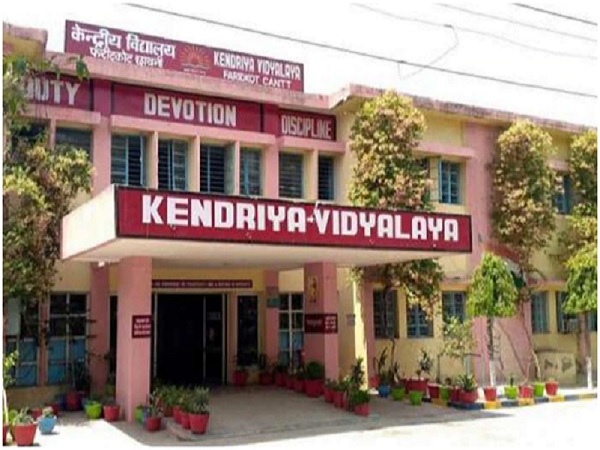
by admin | May 25, 2021 | News
 By Pervez Bari
By Pervez BariBHOPAL: Predictably, the National Human Rights Commission (NHRC), has closed the complaint on the arrest of Kerala journalist Siddique Kappan, jailed since October 5, 2020.
Kappan, also the secretary of the Kerala Union of Working Journalists (KUWF), was on his way to Hathras in Uttar Pradesh (UP), to cover the gang-rape and death of a young woman. Kappan, along with three others, were picked up and arrested under the draconian Unlawful Activities (Prevention) Act, 1967, on charges of allegedly inciting caste and communal violence.
In a bland order passed on April 1, 2021, the NHRC said: “The allegations in the complaint cannot be substantiated and investigation in the matter is still pending. The Commission has considered the material placed on record. SP Hathras is directed to get the investigation completed fairly and to its logical conclusion within reasonable time. Also, DM Hathras is directed to provide monetary relief to victim girl M……. in case 136/20 under applicable rules of SC/ST Prevention of Atrocities Act. With this direction the case is closed.
Also, in a shocking violation of Sec 228A of the Indian Penal Code (IPC), the order names the Hathras rape victim and insensitively refers to monetary compensation to be given to the ‘victim girl’, without any reference to the fact that she died on September 29, 2020, succumbing to the severe injuries she had sustained when she was gang-raped by four upper caste youth on September 14, 2020.
Adv. Ansar Indori filed the complaint before the NHRC on Oct 5, 2020. The NHRC sought an action taken report on December 2, 2020 and, following another complaint filed by Henri Tiphagne, the commission passed an order closing the matter.
The 19-year-old Dalit girl had gone to collect fodder when the four men – Sandip, Ramu, Lavkush and Ravi, who belonged to the Thakur caste, caught her and assaulted her. She sustained a spinal cord injury and her tongue was cut off when the assailants tried to strangle her with her “dupatta”. Her mother heard her cries and managed to get her to a hospital. Police initially rejected her testimony and registered a complaint only on September 20. In three separate recorded complaints, she said she had been raped and named all the four perpetrators. Her condition worsened and she died in Safdarjung Hospital in Delhi. Uttar Pradesh police, which took custody of the body, cremated her in a hurried manner without the knowledge of her family.
The case had caused a storm of protests all over the country and intense media attention followed for days thereafter. The UP government tried to ban media coverage and stop all access to the family of the victim, the district administration, including the District Magistrate (DM) was recorded on camera trying to coach the family and told that, while the media would go away after a few days, the DM would remain, clearly suggesting that they would still have to contend with him!
The UP government filed no less than 19 First Information Reports (FIRs) alleging conspiracy against the Yogi Adityanath government. The UP government even hired a public relations firm to spin the story that the girl was not gang-raped and that the reports of the incident had “revealed the conspiracy to push the state into caste turmoil.”
In the build-up to this, the UP police arrested the Kerala journalist and three others, Atiqur Rahman, Aalam and Masood, who the police alleged, belonged to the Popular Front of India. The arrest, the KUWJ said, was a clear violation of the journalist’s fundamental right to freedom of expression under Art. 19 as the journalist was on his way to Hathras to fulfil his journalistic duty as a reporter. In a letter to Prime Minister Narendra Modi and UP chief minister Yogi Adityanath, KUWJ said that Kappan is a senior journalist and wrote for azhimukham.com and several other Malayalam media houses.
Several attempts to secure bail for Kappan, including the filing of a habeas corpus petition and a bail application in the Supreme Court, have come to naught. In February, the court allowed Kappan to travel to Kerala for five days to see his ailing mother, with the stringent directive that he only interact with his mother and her doctor.
Kappan’s lawyers tried to move the Supreme Court under Art. 32 of the Constitution, to seek constitutional remedy for violation of fundamental rights. In May 2020, the Republic TV owner-editor Arnab Goswami had successfully used Art. 32 to seek quashing of multiple FIRs against him on charges of inflammatory statements and promoting enmity between religious groups (Section 153A of IPC). But when it came to Kappan’s case, the Chief Justice of India S. A. Bobde said the court was discouraging citizens from approaching it with Art. 32 petitions.
The NHRC, a statutory body mandated to take up violations of human rights in India, under the Protection of Human Rights Act, (PHRA)1993. Section 2(1) (d) of the PHRA defines Human Rights as the rights relating to life, liberty, equality and dignity of the individual guaranteed by the Constitution or embodied in the International Covenants and enforceable by courts in India. It is headed by a retired Chief Justice or senior judge of the Supreme Court. Justice H. L. Dattu completed his tenure as the seventh Chairperson of the NHRC on 2nd December, 2020. It is currently without a Chairperson.
Given the spate of human rights violations in India, the work of the NHRC has never been more important. In a letter to the retiring Chairperson, Dattu, the All-India Network of NGOs and Individuals working with National and State Human Rights Institutions headed by Tipaghne, said: “We expected the Commission to uphold and assert its powers in cases such as the killing of protestors in Thoothukudi, arrest of human rights defenders in Bhima Koregaon case, incarceration of protestors peacefully opposing CAA, and the plight of migrant workers. We re-assert that the NHRC belongs to the people and it always took the cause of victims of human rights violations. We always believe that it is the NHRC that serves as a model for other human rights institutions.”
Note: FSC has blanked out the girl’s name from the order reproduced above.

by admin | May 25, 2021 | Opinions

Frank F. Islam
Frank F Islam
On April 22, 2020, when most of the world celebrated the 50th anniversary of Earth Day, the United States did not participate. On Earth Day this year, the U.S. will do more than participate.
President Joe Biden will host a Leaders’ Climate Summit on Earth Day. The Summit will commemorate the signing of the Paris Agreement five years ago, and to encourage leaders of major nations to increase their commitments to reducing greenhouse gas emissions.
The political climate in Washington, D.C. has changed regarding the devastating impact that climate change is having on our planet. In his first weeks in office, President Biden demonstrated his personal leadership and commitment on climate change by reentering the Paris Agreement, revoking the permit for the Keystone XL pipeline, and directing the Interior Department to “pause” new oil and gas leases on federal lands.
The real test of the Biden administration’s leadership on climate change will come in what it does domestically and internationally in the climate change arenas. Several experts and think tanks have already provided recommendations on what the U.S. climate leadership should look like and can accomplish.
The Brookings Institution proposes the following: Embed climate action into U.S. society, advance subnational diplomacy, announce an ambitious yet credible U.S. Nationally Determined Contribution (NDC), revisit U.S. domestic financial regulations and international climate finance, and support international efforts and national strategies.
Assessing those recommendations demands experienced and expert leadership. President Biden understood this, and that is why he named former Secretary of State John Kerry to a cabinet level position as his Special Presidential Envoy on Climate, and former EPA Administrator Gina McCarthy to be the White House National Climate Advisor.
When he was Secretary of State, Kerry played a pivotal role in bringing nearly 200 nations together to sign the Paris Agreement. When McCarthy was EPA Administrator the agency launched numerous initiatives to decrease air pollution, reduce greenhouse gases and protect water resources, which transformed the nation’s environmental policies and practices.
Still, Kerry and McCarthy have a challenging task ahead of them. The upcoming Earth Day represents an opportunity to renew the U.S. commitment and to begin to restore its environmental leadership credibility. The starting line for accomplishing must be to present a meaningful NDC for the U.S. to those world leaders attending the Earth Day Summit.
Another important facet of getting the United States back on track as a leader in climate is getting some form of Congressional buy-in to the administration’s climate agenda and management process. This will be easier said than done.
As writer and environmentalist Elizabeth Kolbert noted in her recent New Yorker piece, “Congress hasn’t approved a major environmental bill since 1990.” Ms. Kolbert observed, however, “Still a critical threshold has been crossed. For decades, politicians have avoided not just acting on but talking about warming.”
With President Biden’s arrival in the White House, the times are indeed changing, and Congress may not act but will start talking. Brookings hypothesizes, “Given the current makeup of Congress, actions rooted in tax credits, investment and stimulus are likely to have some traction in the near term.”
The extent and nature of the progress that will be made in the U.S. and globally at this point is purely a matter of conjecture. The fact that the U.S. is back in the game as a collaborative player in strengthening the trajectory and velocity of the commitment to achieving the goals of the Paris Agreement is not.
At the outset of Earth Day more than one-half century ago, cartoonist Walt Kelly published a comic strip that became an Earth Day poster showing his most famous creation, Pogo the possum, looking sadly into a decimated forest saying, “We have met the enemy and he is us.”
On this Earth Day, there is an opportunity to renew the commitment to continue and to improve upon the Paris Agreement journey. While the enemy may be us, it is an enemy that we ourselves can defeat if we have the plans and tenacity to do so.
The ball is in our court this Earth Day. The game is on. If we score enough points, the world and its inhabitants will win. If we do not, there may no longer be a court to play on.

by admin | May 25, 2021 | B-School, Corporate

The application process would be done through online mode. The registration for admission can be done through the official website of KVS on kvsangathan.nic.in.
Kendriya Vidyalaya Admissions 2021: The admissions for Class 1 in Kendriya Vidyalaya is going to start soon. The Kendriya Vidyalaya Sangathan (KVS) has released a notification in this regard announcing the admission schedule for class 1 for the upcoming academic session 2021-22.
According to the schedule, the application process for Class 1 admissions would begin on April 1, from 10 am onwards.
The application process would be done through online mode. The registration for admission can be done through the official website of KVS on kvsangathan.nic.in.
The last date to complete online registration for admission to Class 1 in Kendriya Vidyalayas for the academic year 2021-2022 is 7 pm, April 19.

by admin | May 25, 2021 | News

Assam chief minister Sarbananda Sonowal
Though the fate of Assam CM Sarbananda Sonowal was sealed on March 27, uncertainty remains in the Bharatiya Janata Party over the candidature of chief ministerial candidate of the party in the state. He is contesting from Majuli Scheduled Tribe reserved Assembly constituency in Dibrugarh district where polling is already over in the first phase.
Majuli, it needs to be mentioned, is the largest riverine island in the world and is situated in Brahmaputra.
Sonowal, who became the Union sports minister in the first Narendra Modi cabinet in 2014, was made the chief ministerial candidate of the party ahead of the 2016 Assembly poll.
As there was no towering leader in the Assam BJP the party proposed his name. As he was from ST community the party was quick to capitalise this opportunity though he was till 2011 in the Asom Gana Parishad.
However, just eight months before the last Assembly election, that is in August 2015 Himanta Biswa Sarma, who was number-two in the then Tarun Gogoi government of the Congress joined the saffron party. Sarma was from Brahmin caste and had a much bigger influence among the upper castes. But the party continued to go with Sonowal following the understanding that after 2021 election victory Sarma would be made the CM.
However, the party did not deem it fit to project Sarma, the present number-two and finance minister, as the chief minister candidate as it may turn ST votes away.
Assam watchers are of the view that the BJP may once again make Sonowal a minister in the Union cabinet, but is not making Sarma’s name public. Sonowal has been fielded again because the ST voters may think that he would again become the chief minister of the state.
The next two phases of poll are going to take place on April 1 and 6.

by admin | May 25, 2021 | Business
 Experts are of the view that the canal needs constant dredging because of the sandy winds blowing in the region.
Experts are of the view that the canal needs constant dredging because of the sandy winds blowing in the region.
Sarim Ahmed
THE Suez Canal, one of the most important waterways in the world, was recently in the news for about a week. A container ship, named Ever Given had ran aground and stuck diagonally in the canal on March 23. As a result, international shipping had come to a halt in the canal. Given the importance of the canal, according to even modest estimates, there has been a colossal loss to international trade by the recent incident.
Here are some facts by which one can gauge the importance of the canal:
About 10 % of the global trade flows through the canal. Goods worth $ 9.6 billion pass through it every day. Over 50 ships pass through it per day.
Since ancient times, mankind has sought to build a water passage through Egypt to link the Red Sea with the Mediterranean either indirectly through a canal linking the Red Sea with the Nile river as in the Pharaonic times, or directly. A proposal was even given for the construction of a canal linking the Nile river with the Red Sea during the time of Caliph Umar, but it was put down because the authorities in Medina thought that it will make the capital vulnerable to the Byzantines who were quite active in the Mediterranean. It needs to be mentioned that it was only in the second half of Caliph Umar’s reign that Egypt was taken from the Byzantines.
But it was only in the second half of the 19th century, in 1869, that a canal came into existence with the initiative of a French engineer Ferdinand de Lesseps. The construction started in 1859 and it is estimated that about 1.5 million workers took part in the endeavour.
With the construction of the canal the distance between London and Mumbai was reduced by about 8,900 km. The length of the canal is 193 km and it connects Port Said on the Mediterranean coast with Port Tewfick at the city of Suez. The canal is operated and maintained by the state-owned Suez Canal Authority of Egypt and it is an important source of revenue for the country.
In 1956, President Nasser of Egypt nationalised the canal. Before that, though the canal was the property of the Egyptian government, French and British firms had a stake in it. This led to the Suez Crisis of October-November 1956 in which Britain, France and Israel invaded Egypt. The two superpowers, the US and USSR, showed maturity and the crisis was averted and the canal was handed back to Egypt.
The canal was closed for eight years between 1967 and 1975 on account of the Six Day War between Egypt and Israel. During the War, Israeli forces occupied the Sinai Peninsula, including the entire east bank of the Suez Canal. However, during the 1973 Yom Kippur War the Egyptian army retook control over the canal by recapturing its eastern bank and the Sinai Peninsula.
On March 23, Ever Given, a container ship, because of the loss of steering control started to drift towards the bank of the Canal. The presence of the South wind is mainly attributed to have pushed the ship in that direction.
Now that the Canal is once again open for international shipping after incessant efforts by the authorities the movement of ships and international commerce is once again expected to come on track. It needs to be mentioned that tug boats and dredgers were used to free the ship and about 30,000 cubic metres of mud and sand was removed from beneath the ends of the ship.
Experts are of the view that the canal needs constant dredging because of the sandy winds blowing in the region. It needs to be mentioned that the Sinai Peninsula is a desert. It was in October 2017 that a Japanese ship got stuck here last time.
The NewsWeb






